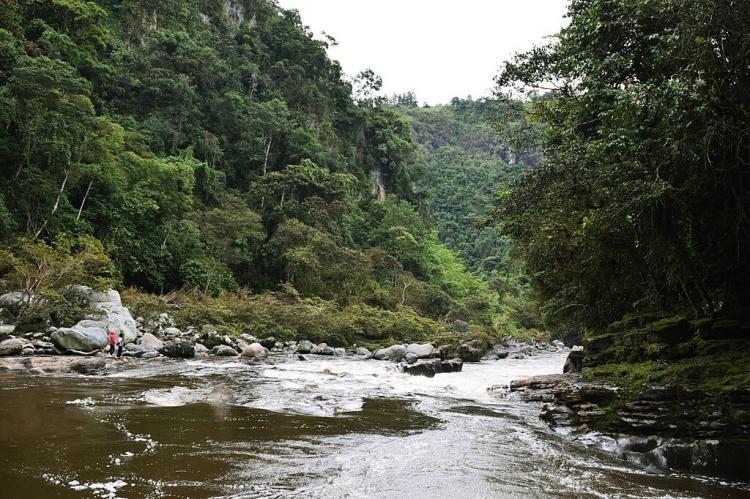The Magdalena-Urabá Moist Forests: A Biodiversity Treasure of Colombia
The Magdalena-Urabá moist forests are a diverse ecosystem along Colombia's Caribbean coast, showcasing the country's natural wealth. They extend from the Magdalena River valley to the Gulf of Urabá and are part of the Tumbes-Chocó-Magdalena biodiversity hotspot.
The Magdalena-Urabá Moist Forests: A Biodiversity Treasure of Colombia
Nestled along the Caribbean coast of northern Colombia, the Magdalena-Urabá moist forests ecoregion is a remarkable and diverse ecosystem that is part of the more significant Tumbes-Chocó-Magdalena biodiversity hotspot. This lush and verdant region, stretching from the Magdalena River valley to the Gulf of Urabá, is a testament to Colombia's incredible natural wealth, offering a glimpse into the country's rich biological heritage.
Geographical Setting
The Magdalena-Urabá moist forests ecoregion encompasses the coastal and lowland areas of the Magdalena River basin and the Urabá region along the border with Panama. This area is characterized by a complex landscape featuring a mosaic of tropical rainforests, wetlands, mangrove swamps, and coastal plains. The Serranía de Abibe mountain range bounds the region to the east and the Caribbean Sea to the north and west.
Climate and Hydrology
The Magdalena-Urabá moist forests experience a tropical maritime climate, with high temperatures and year-round precipitation. The region receives an average annual rainfall of around 2,000 to 4,000 millimeters (80 to 160 inches), with a pronounced wet season typically lasting from May to November. The Magdalena River and its tributaries are crucial in shaping the hydrology and supporting the diverse array of wetland habitats within the ecoregion.
Vegetation and Ecosystem Dynamics
The Magdalena-Urabá moist forests are dominated by a lush and diverse array of tropical rainforest species, including towering canopy trees, a rich understory of shrubs and herbaceous plants, and a multitude of epiphytes, lianas, and ferns. Common tree species include the Ceiba (Ceiba pentandra), Caracolí (Anacardium excelsum), and Jobo (Spondias mombin). These forests are known for their high levels of structural complexity and ecological connectivity, which support a wide range of plant and animal life.
Biodiversity and Endemism
The Magdalena-Urabá moist forests are renowned for their exceptional biodiversity, with a high concentration of plant and animal species found nowhere else on Earth. This ecoregion is home to numerous endemic and threatened species, including the critically endangered Brown-headed Spider Monkey (Ateles fusciceps), the vulnerable Baird's Tapir (Tapirus bairdii), and the endemic Magdalena Guan (Penelope perspicax). The region also serves as an essential habitat for various migratory bird species that use the forests as a stopover or breeding ground.
Conservation Status and Threats
The Magdalena-Urabá moist forests are part of the Tumbes-Chocó-Magdalena biodiversity hotspot, which recognizes the region's exceptional levels of biodiversity and the significant threats it faces. Despite its ecological importance, this ecoregion has been subjected to extensive deforestation and habitat degradation due to agricultural expansion, illegal logging, and infrastructure development.
Conservation Efforts
Various conservation initiatives have been implemented to protect the Magdalena-Urabá moist forests in response to these threats. The region is home to several protected areas, including the Paramillo National Natural Park and the Uramba Bahía Málaga National Natural Park, which aim to safeguard the forests and their unique biodiversity. Additionally, the Ciénaga Grande de Santa Marta Biosphere Reserve, designated by UNESCO in 2000, encompasses a significant portion of the ecoregion and seeks to balance conservation with sustainable development.
Conclusion
The Magdalena-Urabá moist forests are a true gem of Colombia's natural heritage, a biodiversity hotspot that showcases the country's incredible ecological richness. As we work to protect and restore these invaluable ecosystems, it is crucial that we recognize their global significance and commit to their long-term preservation, ensuring that future generations can experience the wonders of this remarkable ecoregion.
